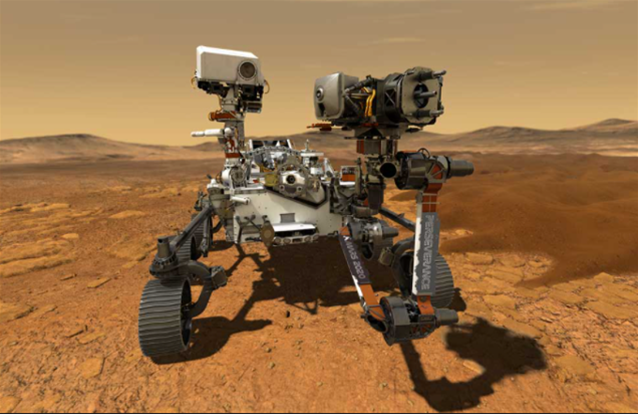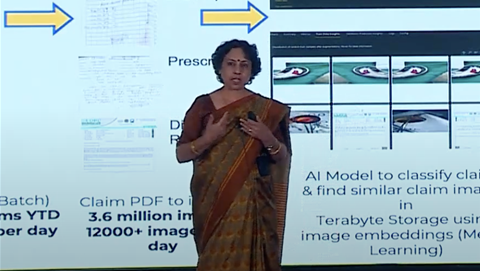AI in Asia has come a long way over the past few decades. Just take the study by EDBI and Kearney on the state of AI readiness in Singapore, Malaysia, Thailand, Vietnam, and the Philippines as an example. We are seeing momentum on the adoption of AI use-cases in various industries, showing the technology’s prominence within the region.
AI has also been integrating seamlessly into our homes and daily lives. Think about your own in-home virtual assistant answering your inquiries regarding the weather and local restaurant recommendations for dinner.
Even virtual fraud detectives, which tirelessly work around the clock to alert financial institutions of potentially fraudulent activities, have become commonplace and expected. These are only a few examples of AI that have become familiar, embraced in the current technological paradigm.
Now, there is the question of how the region advances further by working toward taking more of a lead in expanding the value of AI. AI is vast in its application potential, but to truly remain at the forefront, it is necessary to continuously explore the rapidly evolving nature of this advanced technology.
The Traditional Paradigm: Numeric AI
Currently, most AI solutions are based on numeric techniques, which (at a high level) analyse a deep well of data to uncover patterns and correlations. A good example of this would include predictive maintenance systems, which can help operations teams estimate the lifespan of a particular machine, based on a large amount of historical sensor data collected over several years.
In a way, cutting-edge machine learning and deep learning technologies have presented modern men with the unprecedented ability to predict the future. However, one major challenge is that the more commonly implemented numeric AI solutions operate in black boxes.
Primarily numeric systems can tell you what may potentially happen in the near future, but they cannot explain why certain events will happen or provide a clear answer as to what to do when a problematic scenario arises.
Making AI Explainable through Symbolic Integration
There is also an urgent need to understand why an advisory solution arrived at a certain recommendation, which will require a change in the way we approach AI.
This is especially crucial in high-risk, high-value industries such as energy, healthcare, and finance where the stakes are too high to trust the decisions of a machine at face value, with no clear explanation of its reasoning.
To make an AI system explainable, a symbolic reasoning layer needs to be added and woven into traditional numerical workflows. Symbolic systems help find meaning in patterns through embedded human expert knowledge, principles, and behaviours.
Symbolic AI is the inference aspect for answering the why. It reasons through ambiguity and missing or incomplete data to provide a detailed explanation for how a recommendation was reached, just as your most experienced human operator would.
Hybrid systems comprised of both numeric and symbolic components exhibit intelligence and cognition by harvesting deep insights hidden within a vast amount of collected data along with human knowledge. This is where Cognitive AI comes into the picture.
Traversing Space with Incomplete Data
Perhaps one of the best illustrations of cognitive technologies is that of NASA’s Mars Rover. Sending satellites, rovers, and spaceships into outer space is not new -- in fact, we have seen numerous examples of such initiatives over the decades. However, an often under-appreciated factor is the integral role AI plays in these expeditions.

The Mars Rover uses cognitive hybrid AI to navigate and survive the harsh terrain
Numeric systems require data. Unfortunately, this is exactly what scientists and engineers often lack when building AI suitable for space exploration. Faced with grand challenges, developers have turned to the addition of symbolic AI techniques in scenarios where unmanned machines operate, like the Mars Rover.
Cognitive hybrid AI proved itself as the technology with the ability to make more autonomous decisions and learn without direction (similar to human-like reasoning), helping NASA’s Rover survive the ever-changing conditions of Mars’ uncharted terrain.
Excessive dust had accumulated on the Rover’s solar panels, making it difficult to receive the amount of sunlight necessary to power itself. Using Cognitive AI, the Rover overcame this critical issue; by cognitively deciding to tilt and shake its solar panels to remove enough dust to regain its ability to absorb solar rays, it solved the problem without being explicitly taught a priori.
Instead, it reasoned similarly to the way a human would. In this scenario, the Rover displayed Cognitive AI, with the ability to reason and think about the best action for the problem at hand without direct human intervention.
Extending Cognitive AI to Different Business Verticals
The story didn’t stop there. The power of Cognitive AI has been extended to transform fundamental industries such as energy, healthcare, power/utilities, and financial services sectors. A power generation plant is just one example.
Cognitive technologies will be able to assist power operators in the identification and alleviation of operational challenges, minimising downtime and improving efficiency across an entire plant.
In the financial services sector, because of Cognitive AI advisors, smart trading that adopts such solutions will no longer operate as a black box experience. Cognitive systems can employ human-like reasoning through the combination of data-driven numeric approaches symbolic techniques constructed from the encoded knowledge of the industry’s most prominent traders.
Personal digital advisors of this nature will be able to explain why they recommended certain actions thus empowering better, faster decisions that not only encompass data but also collective human expertise, experience, and best practices.
Elevating quality and risk assessment are some of the most substantial advantages of adopting AI in the financial sector. Cognitive solutions can boost visibility for lenders to make underwriting determinations with more certainty as well as elevate monitorability for merit and risk in credit portfolios.
With such systems, financial institutions increase their ability to achieve more precise forecasting by identifying trends and analysing data in greater depth.
Enterprise-grade, hybrid Cognitive AI has been proving its capability to revolutionise businesses by helping leaders derive more value from their data and processes, effectively streamlining whole operations at every stage of an organisation.
Industries and companies have been gaining more than just returns on their AI investments; with cognitive solutions, they are achieving actual boosts in revenue from adopting and implementing artificial intelligence technologies.
The areas in which cognitive solutions can revolutionise our lives, whether it be commercial or personal, are numerous. The outlook for cognitive technologies, ready and eager to enter this brave new world of digitalisation, is very exciting indeed.
Yongli Hu is Data Scientist, Beyond Limits Singapore and Kimberly Gilbert is Director of Technical Commercial Engineering, Beyond Limits.









